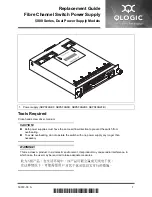
7
LITHIUM TWO-STAGE SMART CHARGING
The two-stage “smart” charger continuously measures the battery voltage output and regulates
the amount of charge using two modes of operation: Bulk and Absorption mode.
2-STAGE CONVERTER VOLTAGE OUTPUT MODES
Understanding output voltages of a two-stage converter.
BULK MODE
This mode is designed with two purposes in mind. First, to quickly restore the energy back
into the battery. Second, to ensure the lithium cells inside the battery remain balanced. This is
accomplished by boosting the output voltage to 14.6 VDC and allowing the maximum current to
flow as required by the loads.
The bulk mode stage could last anywhere from one to four hours based on the battery and load
current which is being used. For a full battery, the bulk stage has a minimum time requirement of
one hour, which allows the lithium cells inside the battery the time required to “balance”.
For an empty battery, the bulk stage has a maximum time requirement of four hours. If your
application requires longer than four hours (such as a larger battery bank > 200 Ahr), a simple
cycling of power will reset the timers.
As the energy is restored into the battery, the DC system voltage will climb and the current from
the converter will decrease. If the total amperage draw from the converter reaches a preset point
(within the one to four hour timer), the converter is designed to drop out of bulk mode.
ABSORPTION MODE
This mode is designed with one purpose in mind. This purpose is to provide a safe operating
voltage for all loads in the RV. This is accomplished by reducing (from bulk mode) the output
voltage to 13.6 VDC and remaining at this voltage until the power is cycled to the converter.
The absorption mode stage is the default or normal mode of operation, which has no timer
associated with it. In this mode an output of 13.6 VDC is provided to the DC circuits in the RV.
This voltage has a long-term history as the acceptable voltage for all loads in the RV, and should
not place undue stress (nor reduce the longevity) of the lights and appliances in the RV. This is not
to say that all loads will have an issue with a constant higher voltage; however, some loads
may have an issue. Please refer to the individual manufacturer’s specifications for acceptable
operating voltage range of the connected load.
Figure 3
































